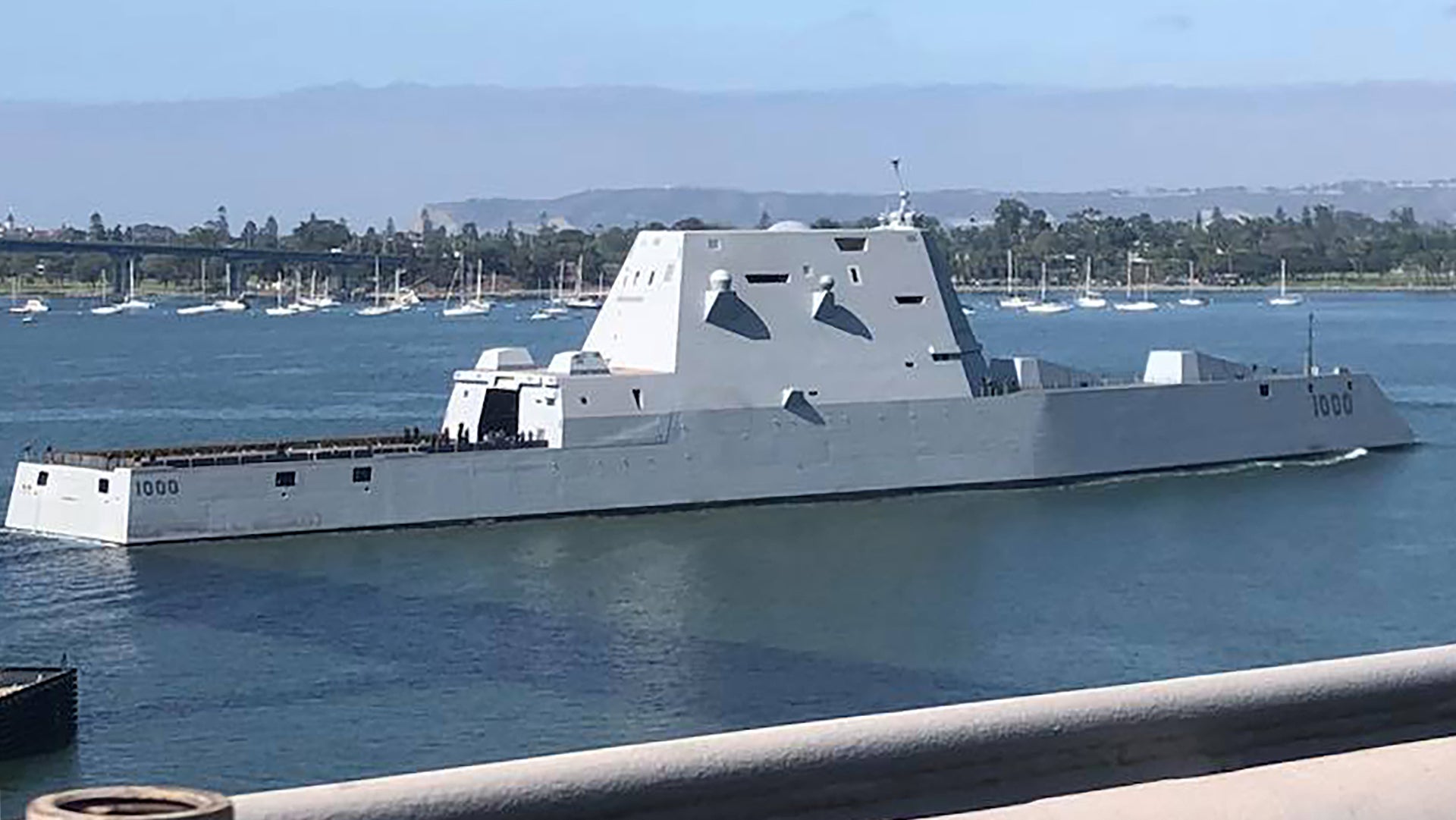USS Zumwalt (DDG-1000) is a controversial ship, to say the least. After much fanfare among the mainstream press, the truth about the ship’s watered-down design, tiny fleet size, useless deck guns, and the implications of these factors, among others, became much more clear. As we reported two years ago, in yet another cost-cutting move, the Navy decided to forego the ship’s very stealth concept—which is the major reason the ships look the way they do, cost as much as they do, and have certain design tradeoffs for doing so—and bolt on communications systems and some sensors in a very unstealthy manner. These corner-cutting measures even included the addition of a rickety looking mast above the ship’s deckhouse. Now we are getting our first glimpses of this disappointing configuration.
Zumwalt, which has been undergoing its combat systems outfitting for over a year and a half, emerged from its pier in San Diego Bay and took to open waters on September 11th, 2018. The vessel’s otherworldly appearance drew a lot of attention. As a result, we have our first images of the near fully outfitted ship underway.

As you can see, there are EHF and UHF satellite communications systems (ball like structures) tacked onto either side of the ship’s deckhouse. Atop it, towards the forward edge of the deckhouse are two Tactical Common Data Link communications systems. Between them is the new mast, and no it isn’t a temporary structure. To the rear of the ship, above the hangar, we see the cupolas for the 30mm Bushmaster cannons. These were also downgraded from the far more capable 57mm guns as another late-in-the-game cost-saving move.
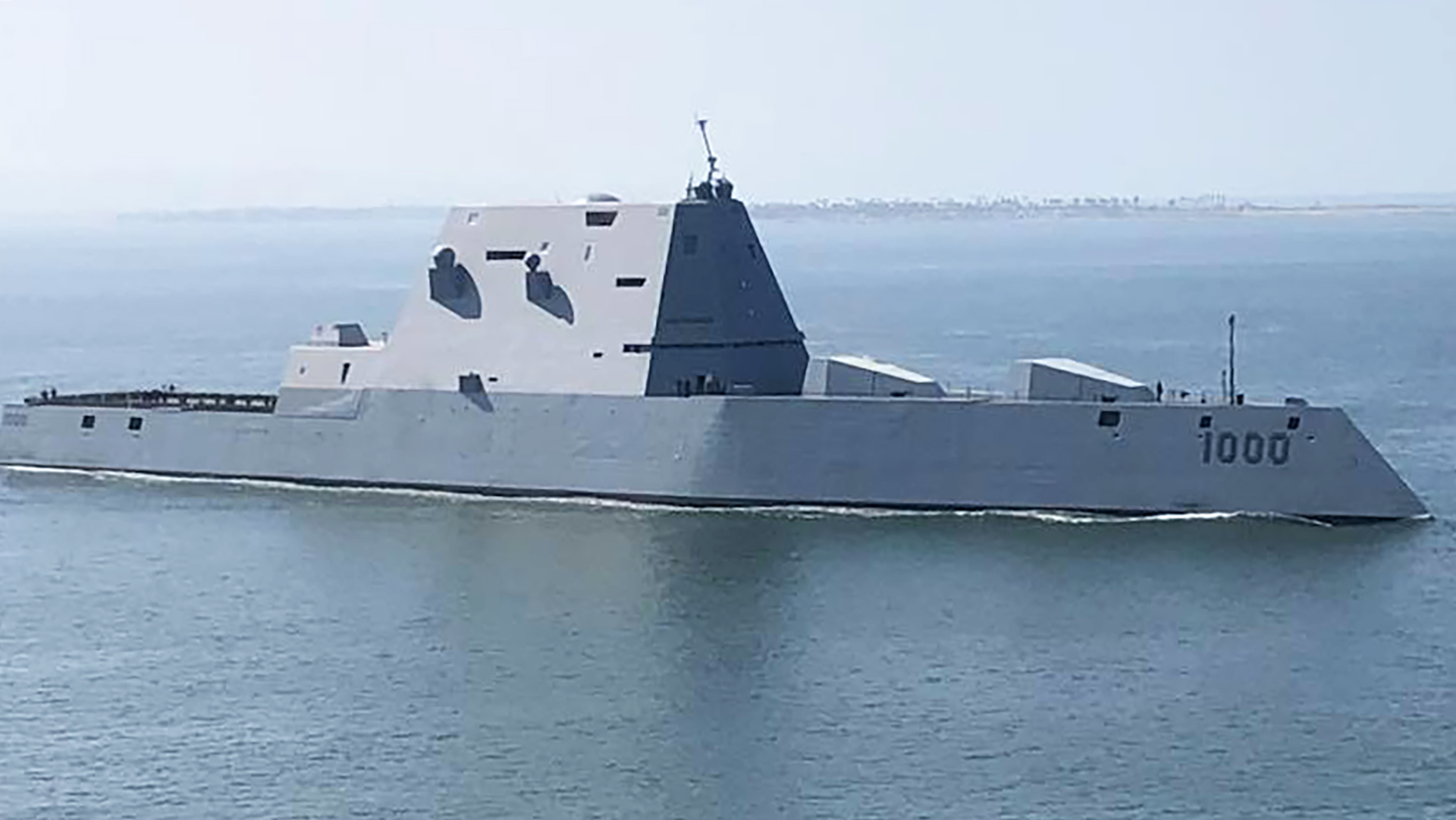
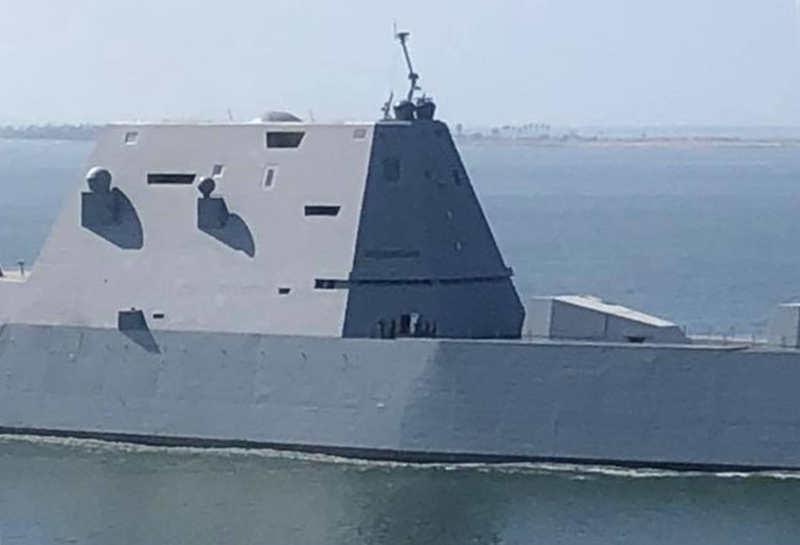
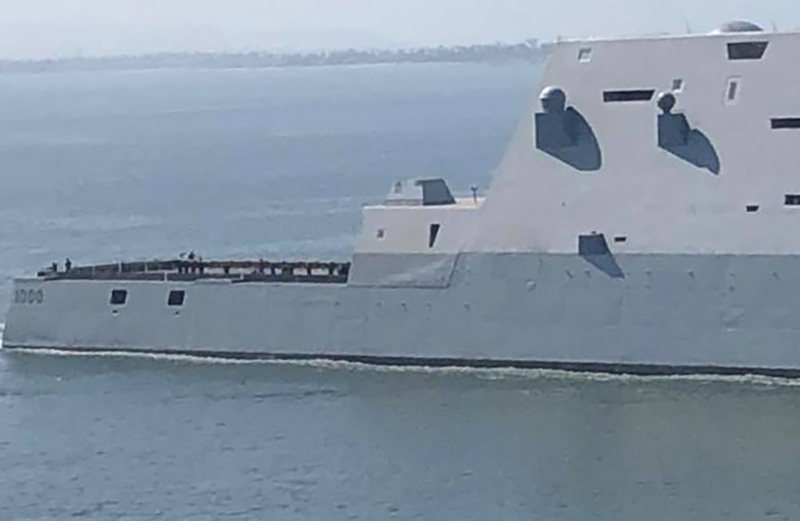
Also worth noting, although it may not significantly impact the radar cross-section of the ship, is the bubble like structure atop the deckhouse and forward of the ships flush-mounted exhaust. This houses the X/Ka band satellite communications antenna system.
Generally speaking, these modifications vibe with this graphic released by the Navy that shows the vessel’s final, revised, and cheaper configuration that we originally posted in 2016:
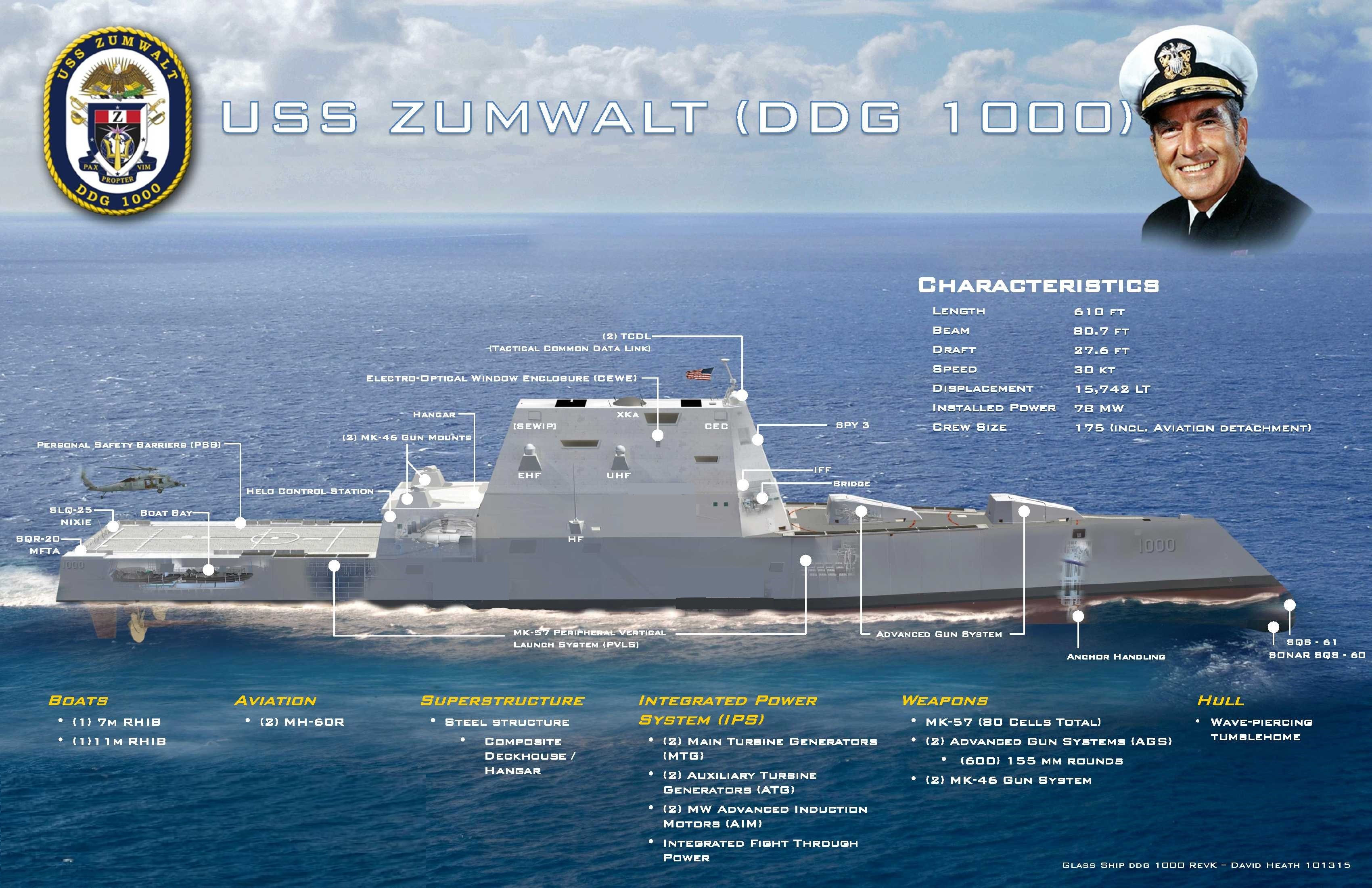
Zumwalt is slated to continue its combat system tests and other trials through 2021 when it will supposedly be ready for combat. Its sister ship, the USS Michael Mansoor (DDG-1001) has been undergoing initial sea trials out of Bath Iron Works in Maine, during which it had a major engine failure that required the complete replacement of one of its Rolls Royce MT30 gas turbines. The repair cost at least $20M. The MT30 is based on the Trent 800 engine found on the Boeing 777. The Zumwalt class’s highly powerful hybrid powerplant is one of its most advanced and exciting features.
USS Lyndon B. Johnson (DDG-1002), the third and last ship in the tiny fleet of ships, is under construction. It will feature a heavier and more radar reflective deckhouse and hangar deck made out of steel instead of composite materials—another cost-cutting measure. The decision could impact seakeeping as well as the ship’s radar signature.

The Navy is still working to define the role of these ships within their larger fleet. It has recently declared that they will be focused more on surface strike than anything else, but the big question is what will their longevity be within the surface combatant fleet overall?
With fat budgets under the Trump administration, there is money to attempt to push these ships into an operational state and possibly sustain them once there, but that could very well change. As they age and become more expensive to maintain, and especially if budgets retract to their pre-Trump levels, it’s questionable if all three would remain in operational service or if they would be used operationally at all—possibly acting as a test force for future technologies instead. Because of these ships’ unique hardware and software and tiny fleet size, it isn’t hard to imagine one or two being cannibalized to keep at least one active in any capacity.
We’ll just have to see how this all plays out. The entire program is a missed opportunity of sorts and another damning example of the paradoxical ‘Pentagon death spiral.’ But the Zumwalt class’s decline in capability and force size has been even more extreme than other programs that experienced a similar fate, such as the B-2 Spirit.
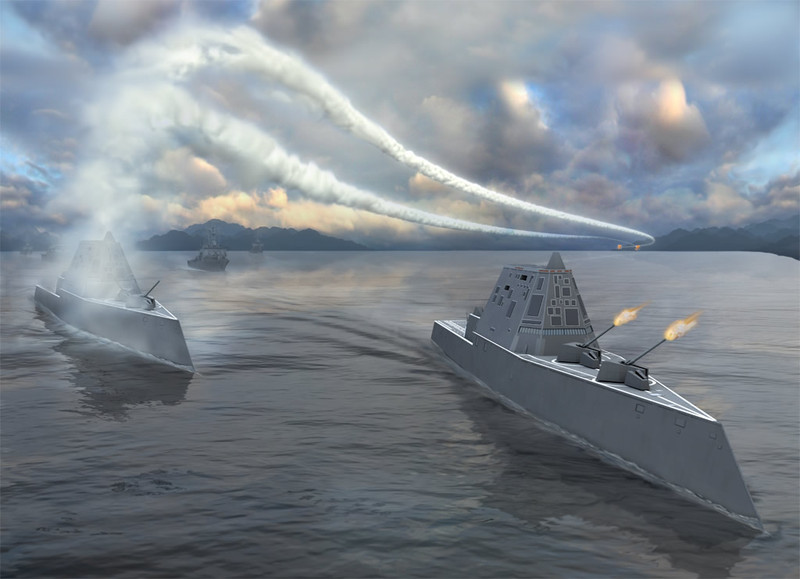
A fully realized DDG-1000 could have been an amazing fighting ship. The Navy will likely realize this once they see what even the dumbed-down Zumwalt class can do. But with the Navy betting big on the far less ambitious Flight III Arleigh Burke class destroyer, there is very little chance that expanded production of the Zumwalt class will come to pass.
There may be some hope, at least when it comes to the DDG-1000 hullform, though. The Navy needs a new cruiser-sized vessel and they desperately want a hullform that is off-the-shelf. The only one available in the size they are looking for with immense power generation capabilities is DDG-1000. If the ship’s controversial tumblehome hull design doesn’t prove too restrictive during actual operations—or if it can be redesigned with a flared bow—maybe the Zumwalt class will rise again in a vastly remodeled, and probably even less stealthy, cruiser form.
A special thanks to Joshua Gathright for letting us use his photos. Check out his page Random Naval History on Facebook, it’s a great follow!
Contact the author: Tyler@thedrive.com
